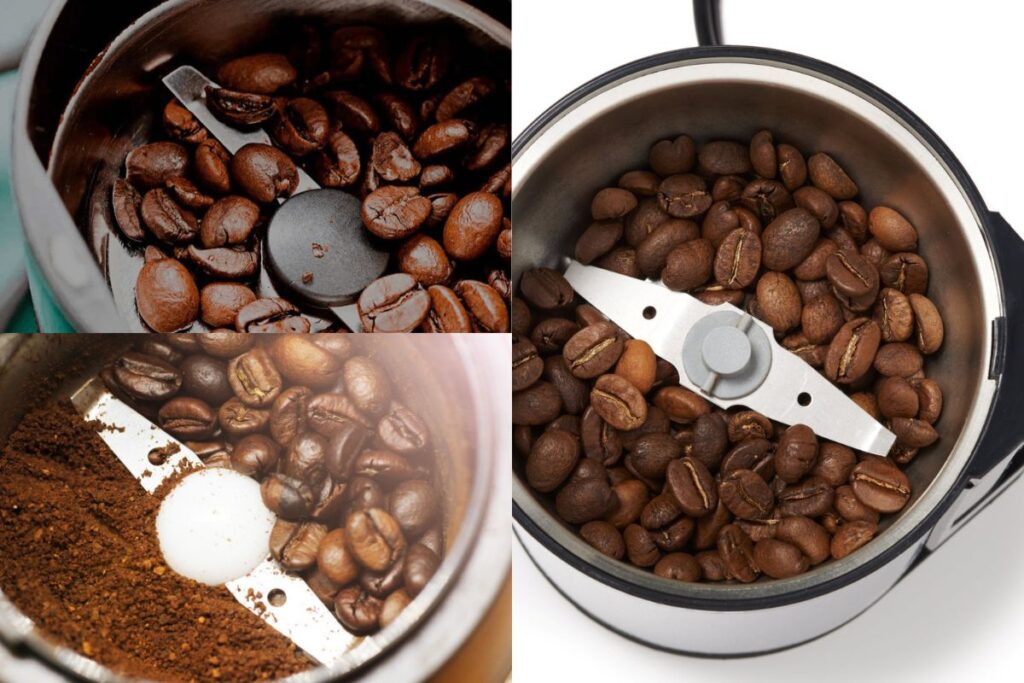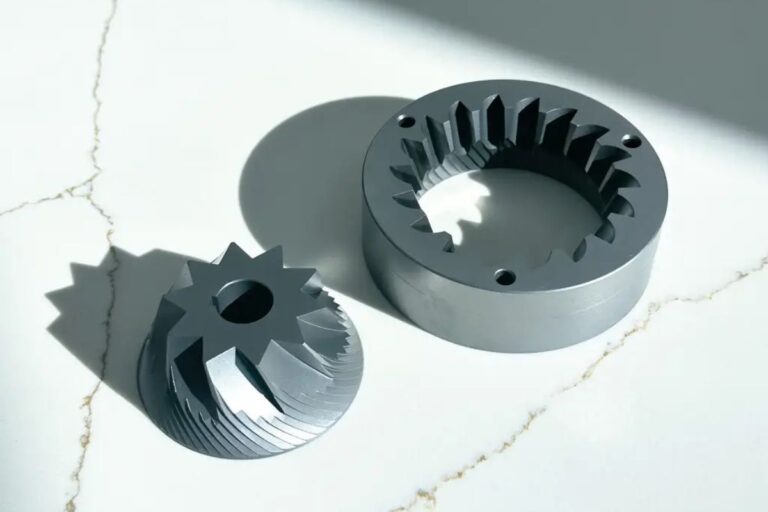A blade coffee grinder is a popular and accessible tool used to grind coffee beans. Unlike burr grinders that use two abrasive surfaces, blade grinders rely on a sharp, rotating blade to chop coffee beans into smaller pieces. These grinders are widely available, often more affordable, and offer a quick way to prepare coffee grounds at home. If you’re just getting into brewing your own coffee, understanding how a blade grinder works and its pros and cons can help you make the best decision for your brewing needs.
How Does a Blade Coffee Grinder Work?
At the core of a blade grinder is a spinning metal blade that chops up the coffee beans as they come into contact. The process is somewhat similar to how a blender works. When you press the button, the blade spins rapidly and breaks the beans down into smaller particles.
The amount of time you run the grinder determines how fine or coarse the coffee grounds will be. For example, a short burst might produce a coarse grind ideal for French press coffee, while holding the button down for longer results in finer grounds suitable for drip coffee machines or espresso.
Types of Blade Grinders
There are two main categories of blade grinders: manual and electric.
Manual Blade Grinders
Manual blade grinders are rare compared to their electric counterparts but still exist. These grinders typically require you to turn a handle or crank, which rotates the blade. While not as convenient, they can be useful when you’re traveling or without access to electricity.
Electric Blade Grinders
The most common type of blade grinder is electric. These grinders are equipped with a motor that spins the blade with the press of a button. Electric grinders are faster, more efficient, and require minimal effort, making them the preferred choice for most home coffee enthusiasts.

Pros of Using a Blade Coffee Grinder
1. Affordable
Blade grinders are typically much cheaper than burr grinders. If you’re just starting to explore the world of home brewing or you’re on a budget, a blade grinder is an affordable option to get you grinding your own coffee beans. You can often find them for $20 or less, making them accessible for almost any coffee drinker.
2. Easy to Use
Operating a blade grinder is incredibly simple. All you need to do is pour your coffee beans into the grinder, secure the lid, and press the button. You don’t need to adjust settings or worry about any complicated mechanisms, making it an ideal choice for beginners.
3. Compact and Portable
Most blade grinders are compact and take up very little space in your kitchen. Their small size also makes them easy to store when not in use. If you need a grinder that can travel with you or fit into a tight kitchen setup, a blade grinder is a good option.
4. Fast Grinding
Blade grinders work quickly, allowing you to have freshly ground coffee in a matter of seconds. This makes them a convenient choice for busy mornings or when you need to make coffee in a hurry.
Cons of Using a Blade Coffee Grinder
1. Inconsistent Grind Size
One of the main downsides to using a blade coffee grinder is that it produces inconsistent grind sizes. Because the blade chops the beans rather than grinding them uniformly, you may end up with a mixture of fine powder and larger chunks of coffee beans. This inconsistency can affect the taste and quality of your coffee, especially with brewing methods that require precise grind sizes, such as espresso.
2. Heat Generation
The rapid spinning of the blade can generate heat, especially if you grind the coffee for an extended period. Heat can negatively impact the flavor of your coffee by causing the beans to release their oils prematurely, resulting in a burnt or bitter taste. This issue is more likely to occur if you need to grind a large amount of coffee at once.
3. Limited Grind Settings
Unlike burr grinders that allow you to control the grind size more precisely, blade grinders don’t offer much flexibility. You have to rely on timing to get the right consistency, and it can take some trial and error to get it just right. If you’re brewing coffee with multiple methods that require different grind sizes, this lack of precision can be frustrating.
4. Noisy Operation
Blade grinders can be quite loud, especially when compared to burr grinders. If you’re sensitive to noise or usually grind your coffee early in the morning while others are still asleep, the sound of a blade grinder might be disruptive.
Best Uses for a Blade Coffee Grinder
While blade grinders may not offer the same precision as burr grinders, they are still useful for certain brewing methods and situations.
1. French Press
French press coffee requires a coarse grind, which can be somewhat easier to achieve with a blade grinder. While you may still get some inconsistencies, the larger grind size is more forgiving, and many people successfully use blade grinders for French press brewing.
2. Cold Brew
Cold brew coffee also benefits from a coarser grind, making a blade grinder a suitable option. Since cold brew steeps for a longer time, it’s less sensitive to grind size consistency, so the uneven particles produced by a blade grinder won’t affect the flavor as much.
3. Drip Coffee
For drip coffee makers, a blade grinder can work reasonably well. While the grind may not be as even as with a burr grinder, you can achieve a fine enough grind for most drip coffee machines. Just be mindful of how long you grind the beans to avoid over-extracting the coffee.
4. Grinding Spices
Beyond coffee, blade grinders are excellent for grinding spices like peppercorns, cloves, or cinnamon. Since spices don’t require the same level of precision as coffee, a blade grinder works well for these tasks, and you can easily clean it between uses to switch back to coffee grinding.
Tips for Getting the Best Results from a Blade Coffee Grinder
If you choose to use a blade coffee grinder, here are a few tips to help improve the quality of your grind:
1. Pulse the Grinder
Rather than holding down the button continuously, try pulsing the grinder. This helps to reduce the heat generated and gives the beans more time to settle between rotations, which can lead to a slightly more even grind.
2. Shake the Grinder
Shaking the grinder gently while pulsing can also help distribute the beans more evenly, leading to a more consistent grind. Just be sure to keep the lid securely in place while doing this to avoid any mess.
3. Grind in Small Batches
Avoid overloading the grinder with too many beans at once. Grinding in smaller batches ensures that all the beans come into contact with the blade and are chopped more evenly.
4. Use a Sifter
If you’re aiming for more uniform grounds, you can use a coffee sifter to separate the fine particles from the coarser ones. This won’t fix the inconsistency completely, but it can help improve the overall quality of your grounds.
Should You Buy a Blade Coffee Grinder?
A blade coffee grinder can be a great option for casual coffee drinkers or beginners who want an affordable and easy-to-use tool for grinding their beans. If you’re someone who primarily makes French press or cold brew, the inconsistencies in grind size won’t affect your coffee too much, making a blade grinder a practical choice.
However, if you’re serious about coffee and brew with methods that require precise grind sizes, such as espresso, a burr grinder may be a better investment. Burr grinders provide more control over the grind size and ensure a more even extraction, which results in a better-tasting cup of coffee.
Related Post: Types of Coffee Grinders
Conclusion
In summary, a blade coffee grinder is a simple, affordable option for grinding your own coffee beans. While it has some drawbacks, like inconsistent grind sizes and potential heat generation, it’s still a useful tool for many brewing methods. If you’re looking for a quick and easy way to grind coffee at home, especially if you’re on a budget, a blade grinder is worth considering. Just keep in mind its limitations and decide if it fits your coffee brewing style.
Frequently Asked Questions About Blade Coffee Grinders
1. How does a blade coffee grinder differ from a burr grinder?
A blade grinder chops beans with a rotating blade, resulting in uneven grind sizes, while a burr grinder crushes beans between two abrasive surfaces for more consistent grounds.
2. Can I use a blade grinder for espresso?
While you can use a blade grinder for espresso, the grind size is often too inconsistent for ideal espresso brewing, which requires a fine, uniform grind.
3. Is a blade grinder good for French press coffee?
Yes, a blade grinder can work for French press coffee since it requires a coarser grind, though you may still get some inconsistency in grind size.
4. Are blade grinders noisy?
Yes, blade grinders tend to be louder than burr grinders due to their high-speed motor and chopping blade mechanism.
5. How do I clean a blade coffee grinder?
To clean a blade grinder, wipe out any remaining grounds with a dry cloth or brush, and occasionally grind uncooked rice to absorb oils and remove residue.
6. Can I grind spices with a blade coffee grinder?
Yes, blade grinders can effectively grind spices like peppercorns and cloves, but it’s best to clean it thoroughly between uses to avoid flavor transfer.
7. Do blade grinders overheat coffee beans?
Blade grinders can generate heat if used for extended periods, which can affect the flavor of your coffee by causing the beans to release their oils prematurely.
8. Is it worth buying a blade grinder if I already have pre-ground coffee?
Yes, grinding your own beans with a blade grinder, even if not perfect, will generally result in fresher, better-tasting coffee compared to using pre-ground beans.
9. Can I control the grind size with a blade grinder?
You can influence the grind size by adjusting how long you grind the beans, but achieving a consistent grind size can be challenging with a blade grinder.
10. How long should I grind coffee beans in a blade grinder?
Typically, 10–15 seconds of pulsing will give you a coarse grind, while 20–30 seconds will result in a finer grind.






